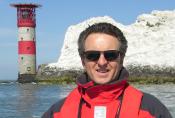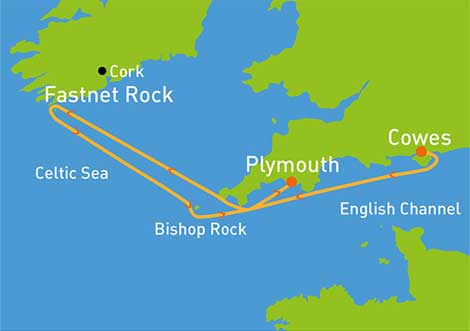Learning from Hard Lessons at Sea

03.08.2019

You Never Stop Learning at Sea John Haynes
In the 1979 Fastnet Race I was sailing on a 33 foot yacht ‘Hullabaloo’. The unexpected storm struck the fleet in open ocean between Lands End and Ireland. Force 10 winds and 40 foot breaking seas were extreme over the shallow Labadie Bank.
The main crew were experienced and we raced offshore together with an excellent skipper. The boat was strong, we stayed at sea and rode it out for 48 hours, then made our way to Plymouth.
The bravery of lifeboat and helicopter crews is extraordinary just for putting to sea and air in these conditions. In a storm the risks are particularly high when approaching a stricken vessel. Rescue efforts were the largest at sea since WW2. The RNLI, HM Coastguard, Royal Navy and Irish Navy performed outstanding search and rescue.
This was a seminal disaster which resulted in a major rethink of safety for small craft. The 1979 Fastnet experience shaped my approach to the water on all types of craft. Including the need for relevant training, effective safety planning and over engineering of all equipment to prevent a single point of failure at sea.
Our objective with NEXT GEN Workshops is to create an independent platform where maritime organisations can share knowledge between sectors. This leads to genuine improvements for current operations, along with design of next generation vessels and procurement of effective safety equipment.
At this year’s Man Overboard Workshop we examined blending traditional MOB solutions with new technology. At the Marine Safety Workshop we looked at what we have learned in 40 years. The Titanic changed ship safety and the hard lessons from the 79 Fastnet had a major impact on small craft safety.
In the 1979 Fastnet Race Inquiry Report, 112 boats reported that on one or more occasions the yacht was knocked down to horizontal during the storm. 77 boats reported experiencing knockdowns to substantially beyond horizontal, includlng total inversions and full 360° rolls.
After the 1979 Fastnet new regulations were introduced to improve the integrity of yacht design, make VHF radios mandatory plus crew eligibility qualifications were introduced.
1979 Fastnet Race
The winner on elapsed time in the race was the 77 foot 'Condor of Bermuda', skippered by Peter Blake. Condor of Bermuda broke the Fastnet record by nearly eight hours (71h 25m 23s). The handicap winner was the 61 foot yacht 'Tenacious', designed by Sparkman & Stephens, owned and skippered by Ted Turner.
VIDEO Ted Turner's Greatest Race - The 1979 Fastnet
PDF BELOW: 1979 Fastnet Race Inquiry Report - Royal Ocean Racing Club & RYA
2019 Fastnet Race
The 2019 Fastnet was won in record time by the trimarran Maxi Edmond de Rothschild - 'Gitana 17'. In 1981 I raced with Edmond Rothschild in Florida and the Bahamas as part of the crew on 'Gitana 5'. We then sailed the 65 foot Sparkman & Stephens yacht across the Atlantic short handed via Bermuda and the Azores to Brittany.
1979 Fastnet Race Inquiry Report - Royal Ocean Racing Club & RYA
All images are copyright RIB & HSC 2024 unless otherwise stated.
This does not exclude the owner's assertion of copyright over the material.
23.09.2024
MCA MGN550 - Lithium-ion Batteries Guidance
Marine Guidance Note 550: 'Electrical Installations - Guidance for…
05.01.2024
The Challenges of Unpredictable Marine Energy
From military to superyacht, it is clear there is an urgent…
International WorkBoat Show 2024
Dates:
12 to 14 November 2024
Location:
Morial Convention Center, New
Foiling and Flying RIBs
Foiling powerboat designed to meet military needs - fast, stable, silent, fuel-saving. Collaboration by SEAir Foiling Systems and Sillinger RIBs.…














